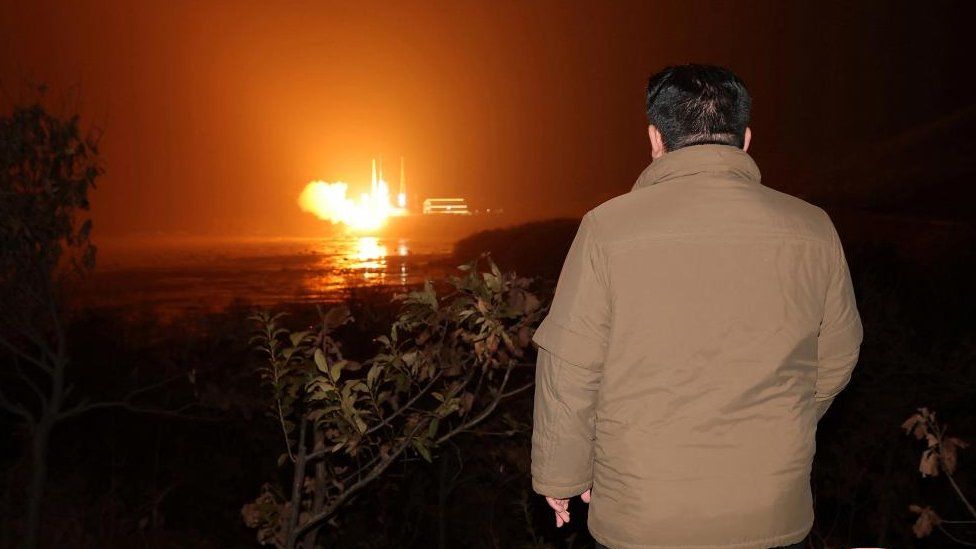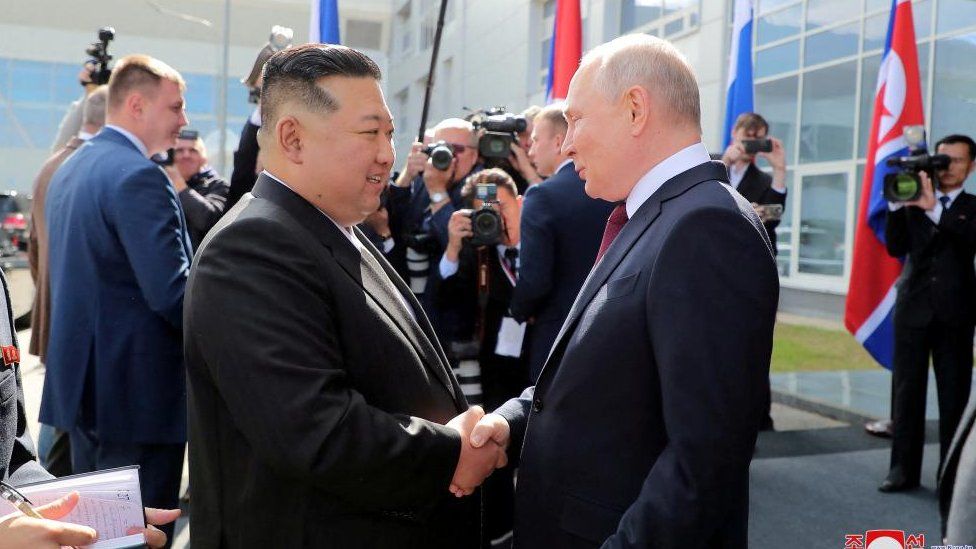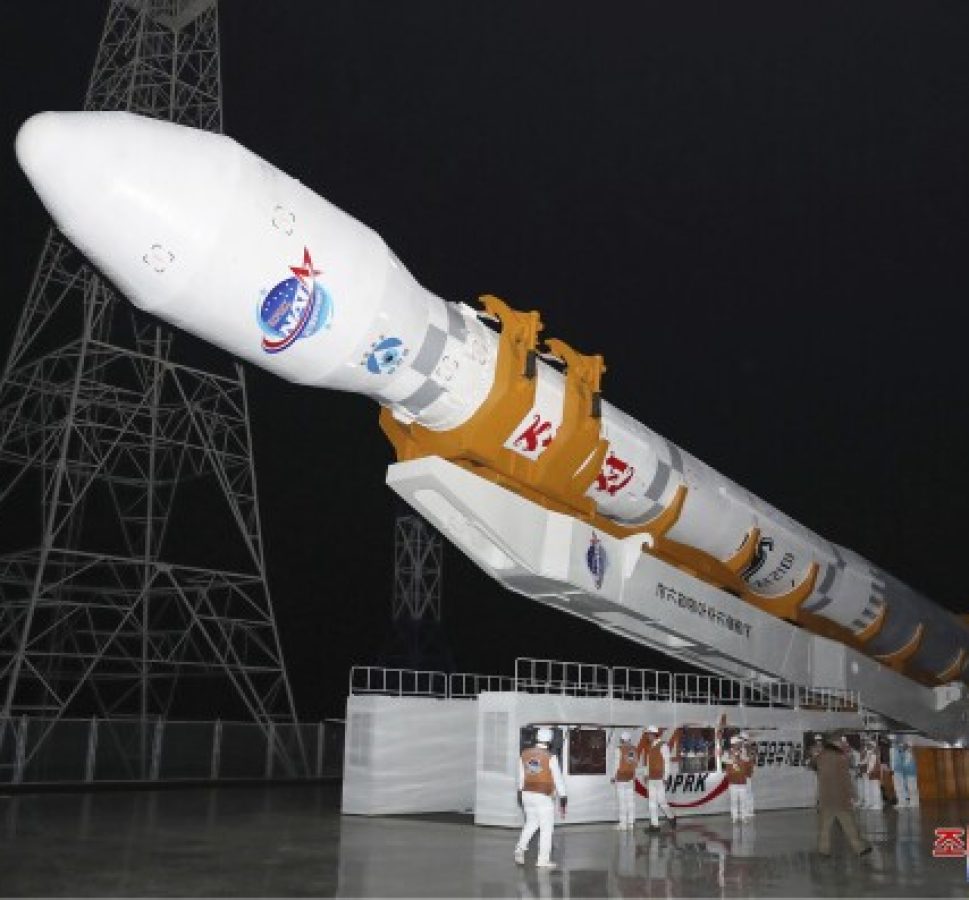
South Korea has suspended parts of its 2018 agreement with the North aimed at lowering military tensions.
This comes after Pyongyang claimed to have successfully launched a spy satellite into space.
Prime Minister Han Duck-soo said the launch threatened South Korea’s security.
Seoul said it would resume surveillance flights along its border with North Korea, breaching a no-fly zone established under the military pact.
Some analysts have said these developments could escalate tensions further.
Pyongyang fired a rocket, said to contain its Malligyong-1 spy satellite, late on Tuesday and hailed the launch as a “success”.
On Wednesday, South Korea’s military confirmed that the satellite had entered orbit but noted that it was too soon to tell if it was actually functioning, though both it and the US strongly condemned the launch.
US National Security Council spokesperson Adrienne Watson said the move risked “destabilising the security situation in the region and beyond.”
Developing a functioning spy satellite is a major part of North Korea’s five-year military plan, set out by its leader Kim Jong Un in January 2021.
The technology could in theory enable Pyongyang to monitor the movement of US and South Korean troops and weapons on the Korean Peninsula, allowing it to spot incoming threats. It would also allow the North to plot its nuclear attacks with more precision.

North Korea’s space agency, the National Aerospace Technology Administration, said the launch was an attempt to bolster the country’s self-defence capabilities, in the face of “dangerous military moves” by its enemies. Pyongyang added that it planned to launch several more spy satellites “in a short space of time”.
Some analysts are sceptical as to whether the satellite is advanced enough to be effective. Jang Young-geun, who runs the Missile Centre at the Korea Research Institute for National Strategy, predicted that given past attempts, the resolution of the satellite’s camera is “probably not at a level to allow for detailed military reconnaissance.”
Nonetheless, he said, a low resolution is “better than nothing”, as an attack – regardless of the target – will need information to make it more effective.
Ankit Panda, a nuclear policy expert at the Carnegie Endowment for International Peace, also reckoned that while the satellite could enhance the effectiveness of North Korea’s armed forces, it could conversely have a “stabilising effect” on the Peninsula.
“It could make Pyongyang act less skittishly in crises,” he said. “For instance, it could use its satellites to verify that the US and South Korea were, in fact, not surging their forces to prepare for a major attack.”
North claims success after two failed launches
This is the North’s third attempt this year to put a spy satellite into orbit, after two previous attempts in May and August failed. South Korean officials said they believed Pyongyang had received technical support from Moscow, which allowed it to overcome the hurdles that had led to its previous failures.
When Kim Jong Un met Vladimir Putin at the Vostochny space centre in Russia’s far east in September, the Russian leader hinted he would help Mr Kim build satellites. The US and South Korea believe the North is sending Russia arms to use in Ukraine, and that Moscow may have agreed to share its military expertise in return.
But Mr Panda said there was no evidence that Pyongyang had received Russia’s technical assistance and implemented it. “This was North Korea’s third launch attempt and they’ve been carrying out their own research and development on space systems for a while now,” Mr Panda noted.

Jo Bee Yun, an associate research fellow at the Korea Institute for Defence Analysis (KIDA), added that the time was too limited for Russia to have provided “game-changing” technology, but that “significant transfers” could be expected in the future.
Mr Kim and then South Korean President Moon Jae-in signed the Comprehensive Military Agreement in 2018, in an attempt to de-escalate tensions between their two countries and prevent a conflict erupting. It limited military movements by both sides near the border, removed guard posts, banned live-fire drills, and created a no fly-zone.
But the South Korean government had recently argued that the deal left it vulnerable to an attack, by prohibiting it from flying surveillance aircraft and reconnaissance drones along the border.
Members of South Korea’s National Security Council met in the early hours of Wednesday morning, followed by its defence chiefs and cabinet. All agreed the country should restart surveillance operations along the border with immediate effect and with the president’s backing.
This increased surveillance will allow the South to monitor North Korean outposts and long-range artillery, previously hidden behind its mountain slopes. Seoul currently relies on US spy satellites to monitor the North, but is planning to launch its first home-built model into space at the end of November.
Some analysts warn that the suspension of the military pact could escalate tensions and make cross-border skirmishes more likely.
Hong Min, from the Korea Institute for National Unification, pointed out that the deal had significantly reduced the number of cross-border incidents and had been successful in deterring the North. He said Seoul risked providing it with “the justification to carry out further provocations.”
However Jo Bee Yun of KIDA, does not believe the suspension would increase tensions, noting that Pyongyang has been regularly launching missiles since 2022. “The cycle of provocations has already resumed. South Korea had to respond sometime or another.”






